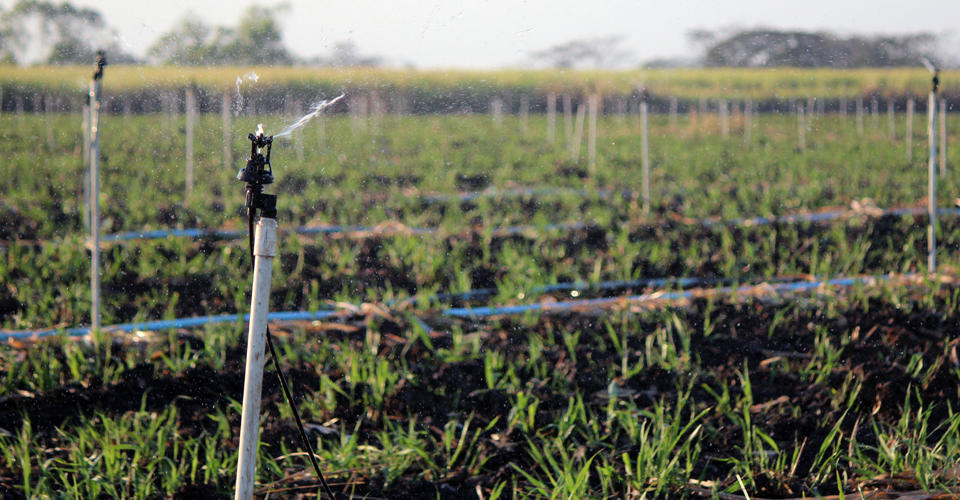The Journey of Sugarcane: From Harvest to Everyday Products
The trip of sugarcane is a diverse procedure that begins with meticulous growing and finishes in a range of products that penetrate our day-to-day lives. As we discover the different facets of sugarcane's journey, its duty in sustainability and the broader implications for our setting come into sharper focus.
Farming of Sugarcane
The growing of sugarcane is an essential agricultural procedure that needs specific environmental problems and management techniques. Optimal development occurs in exotic and subtropical regions where temperature levels range between 20 ° C and 32 ° C. Adequate rains or irrigation is crucial, as sugarcane flourishes in wet soil with well-drained problems (sugarcane product). Dirt high quality significantly influences return; hence, farmers frequently perform soil tests to figure out nutrient requirements
This technique assists in effective gathering and maximizes sunlight direct exposure. Plant turning and intercropping are advised methods to improve soil fertility and decrease insect invasions.
Fertilization is another crucial aspect, with phosphorus, nitrogen, and potassium being the main nutrients required for optimal development. Prompt application of these fertilizers can considerably improve sugar yields. In addition, checking for conditions and bugs throughout the growing period is important, as these elements can negatively influence plant health and efficiency. Generally, successful sugarcane cultivation rests on a combination of ecological stewardship, tactical planning, and ongoing monitoring techniques.
Harvesting Methods
Successful sugarcane growing finishes in the gathering stage, which is critical for making best use of yield and ensuring high quality. The timing of the harvest is essential; sugarcane is commonly gathered when sucrose degrees peak, normally between 10 to 18 months after planting. This duration differs based on environment, dirt type, and sugarcane range.
Collecting techniques can be extensively classified into handbook and mechanical approaches. Manual harvesting is labor-intensive, depending on experienced workers that use machetes to cut the stalks close to the ground. This approach allows for selective harvesting, where only the ripest walking canes are chosen, thus improving total sugar content.
Conversely, mechanical harvesting has gotten appeal due to its efficiency and cost-effectiveness. Specialized harvesters furnished with reducing blades and conveyor systems can refine large areas rapidly, substantially reducing labor costs. However, this technique might bring about the inclusion of immature canes and a prospective reduction in sugar high quality.

Regardless of the method used, making certain that collected walking sticks are delivered quickly to processing facilities is essential. Motivate taking care of lessens wasting and protects the integrity of the sugarcane, establishing the phase for ideal processing.
Handling Techniques
Processing sugarcane involves numerous essential actions that transform the harvested stalks right into usable items, primarily sugar and molasses. The initial phase is washing the cane to get rid of dirt and particles, complied with by the removal of juice with crushing or milling. This procedure commonly utilizes heavy rollers that damage the walking stick fibers to launch the wonderful liquid had within.
When the juice is extracted, it goes through clarification, where contaminations such as soil particles and bagasse are removed. This is typically accomplished by including lime and heating up the juice, allowing sedimentation. The made clear juice is then concentrated via evaporation, where water web content is decreased, causing a thick syrup.

Eventually, the handling of sugarcane not only creates sugar and molasses yet also prepares for various derivatives, here which will certainly be discovered in subsequent discussions.
Products Derived From Sugarcane
Sugarcane is a functional plant that yields a large selection of products beyond simply sugar and molasses. Amongst the key by-products are ethanol and biofuels, which have gotten prominence as renewable energy resources. Ethanol, generated via the fermentation of sugarcane juice, offers as an alternate to nonrenewable fuel sources and is typically mixed with gas to develop cleaner-burning gas, decreasing greenhouse gas exhausts.
Additionally, sugarcane is a considerable resource of bagasse, the coarse residue staying after juice extraction. Bagasse is used in different applications, including the manufacturing of see this site paper, naturally degradable packaging, and as a biomass gas for energy generation. Its use not just reduces waste yet also improves the sustainability of sugarcane processing.
Furthermore, sugarcane-derived items encompass the food market, where it works as an all-natural flavoring representative and sugar in different culinary applications. In the realm of cosmetics, sugarcane extracts are included right into skin care products as a result of their natural exfoliating residential or commercial properties.
Ecological Influence and Sustainability
The farming and processing of sugarcane have substantial implications for environmental sustainability. This crop requires considerable water sources, frequently causing depletion of neighborhood water products and influencing bordering communities. Furthermore, the use of plant foods and pesticides in sugarcane farming can lead to soil degradation and waterway contamination, posing dangers to biodiversity.

Sustainable sugarcane farming likewise promotes soil health via crop rotation and lowered tillage, improving carbon sequestration. The adoption of these practices not just sustains ecological stability however additionally boosts the resilience of farming areas against climate change.
Final Thought
In recap, the trip of sugarcane incorporates numerous stages from growing to handling, eventually resulting in a wide selection of items. The value of sugarcane extends past plain sugar, adding to renewable resource via ethanol manufacturing, lasting packaging via bagasse, and natural extracts for cosmetics. This diverse plant plays a vital role in both nutritional enrichment and ecological sustainability, highlighting its significance in contemporary farming and commercial practices.
Effective sugarcane cultivation finishes in the harvesting stage, which is essential for optimizing return and guaranteeing quality. The timing of the harvest is vital; sugarcane is commonly harvested when sucrose levels height, generally between 10 to 18 months after planting.Processing sugarcane includes several vital actions that transform the gathered stalks right into usable items, mostly sugar and molasses.Sugarcane is a versatile plant that generates a large variety of items past just sugar and molasses. Additionally, the use of plant foods and chemicals in sugarcane farming can result in soil deterioration and river contamination, presenting threats to biodiversity.